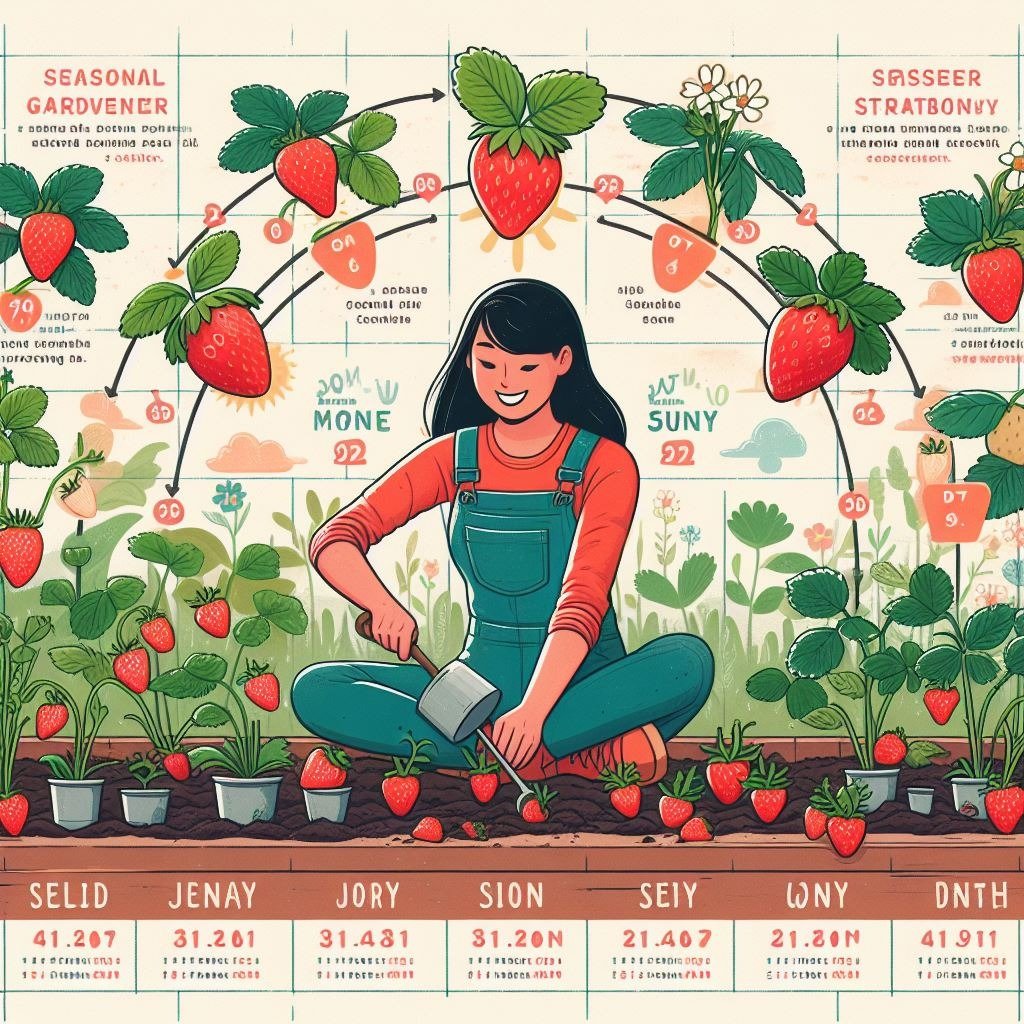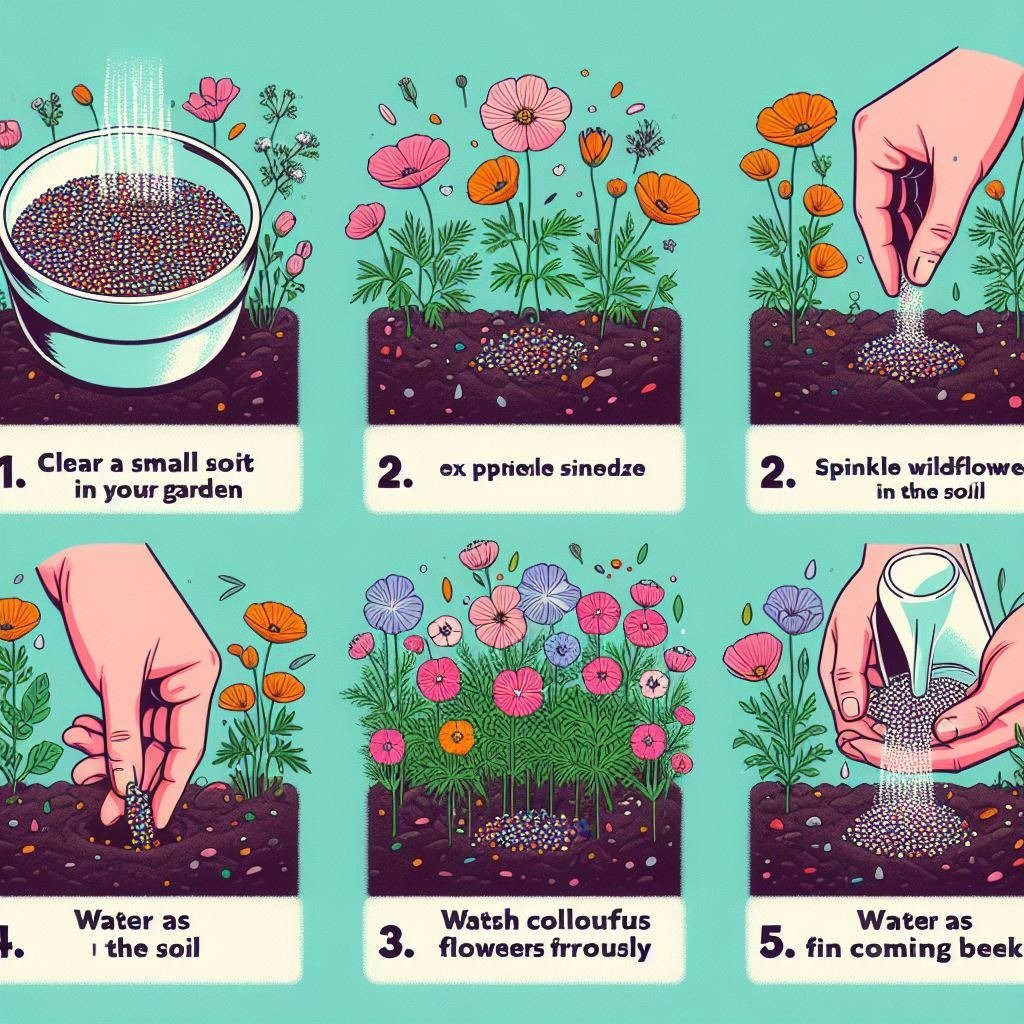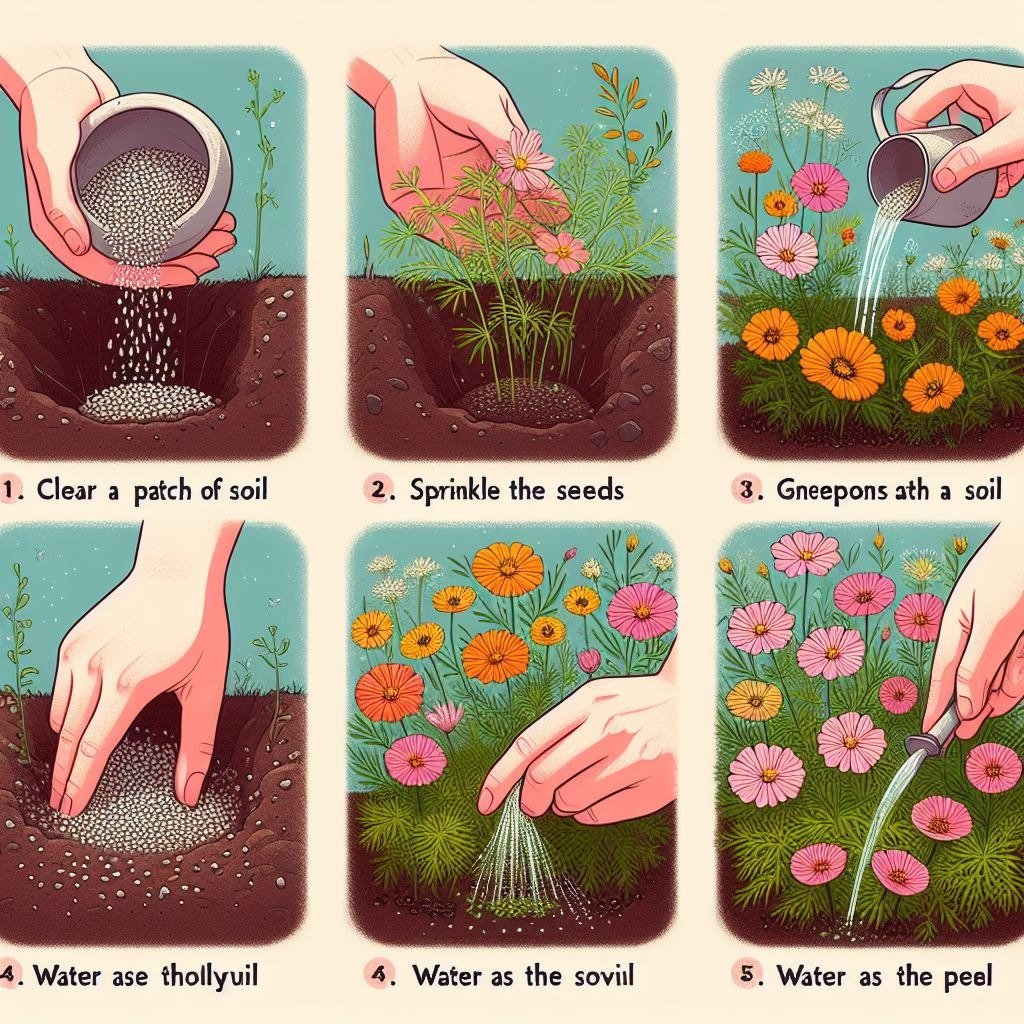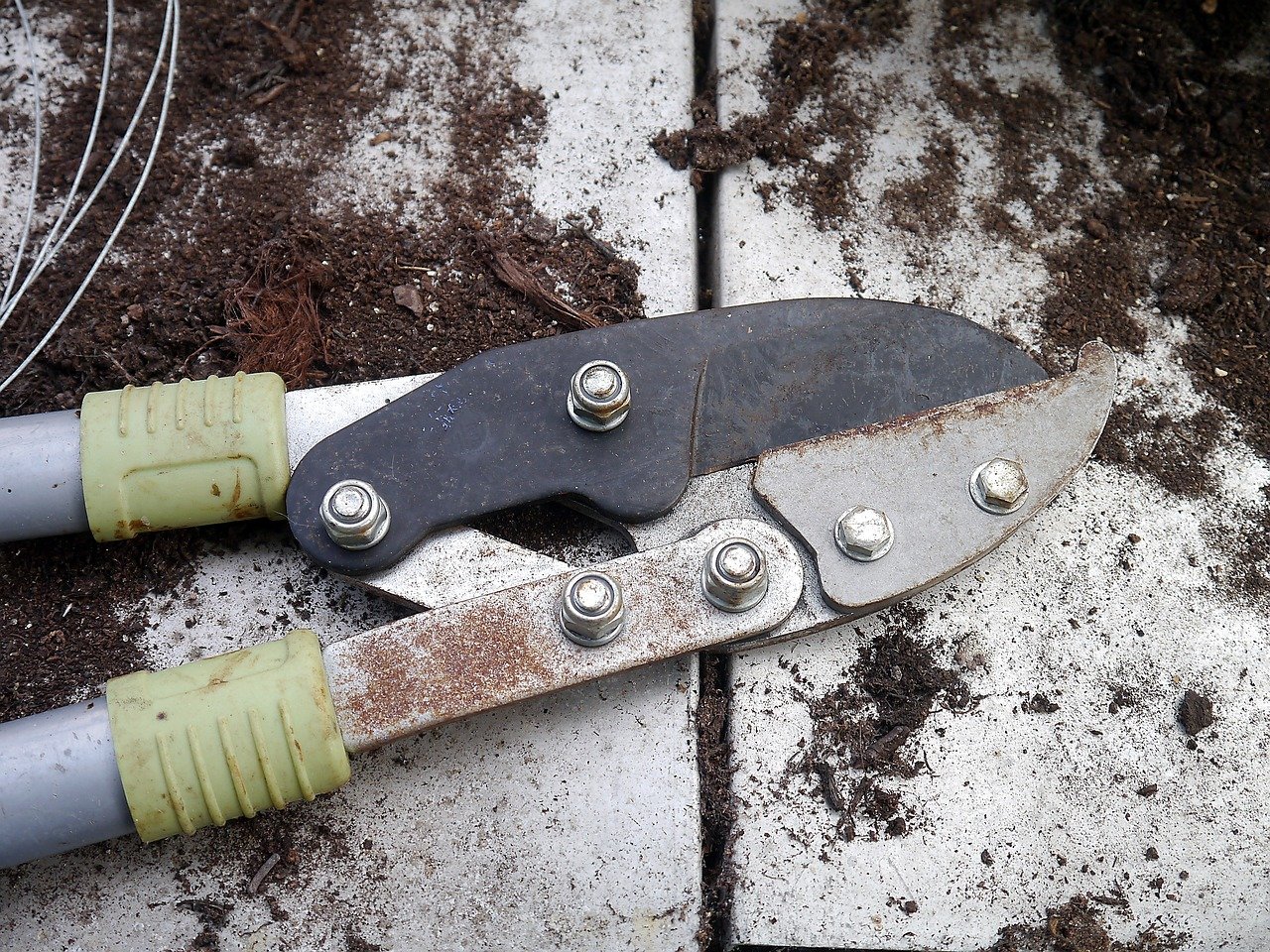
Timing is everything. When to plant strawberries for a great harvesting season is what you should worry about
When to plant strawberries In this book called “The Plot Hero’s Guide,” you are going to learn about the strategic

If you would like to include some wildflowers in your garden and get an organic appearance plus more brightness, you may sprinkle wildflower seeds into your yard, which is the best option. Not only do the wildflowers create a beautiful field with their colors and textures, but also the bees and butterflies go there to collect nectar, thus contributing to the fauna in your garden. In this informative post, we’ll take a closer dive into the stages of how to plant wildflower seeds and create a stunning garden without stressing yourself.
Concerning how to plant wildflower seeds, there are some things to consider that are in the essence of what they are and their special features. Plants like wildflowers are native plants that flower themselves and grow in the wild without the manual efforts of humans. They are systemically designed for tuning to climatic and soil parameters; hence, they are easy to manage and resistant. They can be used in homes, gardens, parks, restaurants, and other places to connect people with nature. Unlike the beautifully designed garden flowers that tend to be formed and structured, wildflowers generally possess a casual, wild, and unrefined look, and in their natural environment, they bring a delightful, gentle sensation of an untamed landscape.
Choosing the proper seeds and the region, as well as the growing conditions you are going to have them in, is the first step in how to plant wildflower seeds, and these conditions would define the kind of seeds and their type. Every wildflower species has the traits to best survive and flourish in a specific environmental factor such as climate, soil, and sunlight. Take note of things like your cold hardiness zone, annual rainfall, and planting area sun exposure levels while you plan for plant selection. Some good-quality seed companies offer region-specific wildflower seed mixes to customers each time they need to choose a blend.
Prepare appropriate soils and learn how to plant wildflower seeds when learning. The wildflowers prefer soils that drain well and are enriched with nutrients, in addition to their pH levels being neutral or a bit acidic. Begin by clearing the area of any existing plants or clutter that the planting bed might require. Next, gauge in the soil to a depth of 6 to 10 inches using a garden rake or tiller. It would also be a good idea to consider enhancing drainage rate and nutrient level by adding a few inches of high-quality compost or well-rotted manure in case your soil has inadequate fertility or is clayey.
Now that you’ve got the soil ready, it’s time to learn how to plant wildflower seeds well. Grain sowing by cast broadcasting is the easiest and most yielding because the seeds are scattered uniformly over the site that is prepared. Observe the seed packet instructions about the sowing rate, generally measured in pounds or ounces per square foot.
When you finish distributing the seeds, lightly squeeze the soil with your hand, about 1/4 inch thick. This is the key step in the process since it guards against seed blowing off or being eaten by birds. For the finishing touch of walking over the area to tamp down the soil or using the lawn roller. This immensely activates the soil-to-seed contact, which is a necessity for the germination of vegetables.
Once a person has mastered the best way to plant the seeds of wildflowers, knowing how to take proper care of the plant through watering and maintenance is imperative. Such care is essential for the successful growth of wildflowers. Wildflowers typically need a consistent moisture pattern that will keep them from drying out or getting washed out during germination and early growth stages. Water more than enough and make sure the soil doesn’t dry out or be flooded while seedlings come out, which might take from one to a few weeks, depending on the plant type.
Drought is harder on seedlings than on established plants, so nurturing these wildflowers will help them become more drought-tolerant and require less frequent watering after they are established. Though it’s still hardly advisable to let the plants starve in the water for the long time they will get, the plants can, throughout long seasons, become wilted or stressed.
Weed removal is another significant factor that determines the success of flower gardens. Some curtains can be tolerant of some plants and grass weeds, but aggressive weeds can handle the resources and therefore need to be removed hands-on in this way or with the handiest herbicide.
A surrounding garden with flowers and birds singing are the most glorious sounds in the world, whose footprints the coming generation may see.
Among the most exciting elements of learning about the journey of wildflower seeds is, amazingly, the emergence of stunning blossoms as they sprout in the growing season. Various species of wildflowers begin to blossom from the onset of spring to the late autumn season, hence providing a dramatic effect as the colors and texture change constantly.

To have a perennial life in your wildflower garden, you need to let some plants go to seed. Through natural replanting, the subsequent years will bring their wildflowers and become the wheat of a wheat field. Do not remove spent flowers or all the plants at the end of the bloom. Instead, leave some seed heads finished to scatter the seeds for next year’s growth.
In addition to being a thrilling task, sowing wildflower seeds is capable of completely changing almost any outdoor area into one with a lush and wild appearance. Take care of such details, and you will not only bring the beauty of varied colors and textures to the place but also enrich it with a local network focused on feeding pollinators. With a little patience and encouragement, your wildflower garden will be not only a source of happiness but also a beautiful place for many years.
According to your climate conditions, spring or fall will give the best results. The soil must be cool and moist in an adequate amount. Read the packet’s instructions, which give the recommended sowing information for your area.
Right, you must get rid of any previous grass, weeds, or other vegetation to plant wildflower seeds in the area. This diminishes competition, and the seeds have a better probability of being planted and growing.

When to plant strawberries In this book called “The Plot Hero’s Guide,” you are going to learn about the strategic

Best Pruner Anyone who enjoys maintaining a lovely garden knows you should choose the best pruners. Pruners are some of